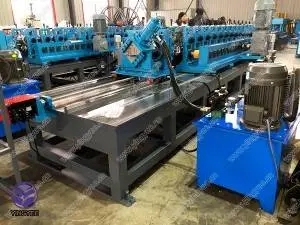
The Importance of Bending Machines in Modern Manufacturing
In the realm of metalworking and manufacturing, bending machines play a vital role. They are essential tools used to shape and form metal sheets and parts with precision and efficiency. As industries increasingly demand high-quality and intricate designs, the importance of bending machines in streamlining production while maintaining quality has soared.
What is a Bending Machine?
A bending machine is defined as a piece of equipment designed to bend sheet metal or metal profiles. Several types of bending machines exist, including press brakes, plate rolls, and rotary bending machines. Each serves distinct functions, depending on the material and desired shape. Press brakes, for example, are commonly used in sheet metal applications, employing force to cause the metal to deform along a specified angle.
Applications Across Industries
Bending machines are vital across various industries, including automotive, aerospace, construction, and electronics. In the automotive sector, for example, bending machines fabricate components like chassis frames or exhaust systems, ensuring parts fit together precisely. In aerospace, where weight reduction is crucial, bending machines create lightweight yet sturdy structures that meet stringent safety standards.
Furthermore, in construction, bending machines facilitate the production of steel reinforcements that enhance structural integrity. The electronics industry also benefits from these machines by creating intricate metal casings or brackets, essential for device functionality. The versatility of bending machines makes them indispensable in modern manufacturing processes.
Advantages of Using Bending Machines

The utilization of bending machines offers numerous advantages to manufacturers. Firstly, they enhance productivity. Automated bending machines can process large volumes of materials quickly, significantly reducing production times. This efficiency allows manufacturers to meet tight deadlines and respond rapidly to market demands.
Secondly, bending machines promote precision. With advanced technology, operators can achieve accurate measurements and repeatable results, minimizing human error. Modern CNC (Computer Numerical Control) bending machines take this a step further by automating the bending process, ensuring that every bend is performed with meticulous accuracy.
Additionally, bending machines contribute to material conservation. By forming metal rather than cutting it away, manufacturers can reduce waste and lower material costs. This is particularly significant in industries where metal prices are volatile, allowing businesses to maintain profitability while being environmentally responsible.
Technological Advancements in Bending Machines
The evolution of bending machines has been driven by technological advancements. Innovations such as CNC controls and 3D simulation software allow operators to visualize and optimize the bending process before actual production. These technologies enable manufacturers to experiment with designs and identify potential issues early on, reducing the risk of costly mistakes.
Moreover, the introduction of hybrid and electric bending machines has revolutionized energy consumption in the industry. These machines offer enhanced performance while consuming less electricity, aligning with broader goals of sustainability and reduced carbon footprints.
Conclusion
In conclusion, bending machines are crucial in the manufacturing landscape, significantly influencing various industries. Their ability to produce components with speed, precision, and efficiency makes them essential tools for modern manufacturers. As technology continues to advance, bending machines will undoubtedly evolve further, fostering innovation while meeting the growing demands of consumers and industries alike. Embracing these advancements may lead to new opportunities for increased productivity, reduced costs, and enhanced product quality, cementing the position of bending machines as a cornerstone of effective manufacturing processes.